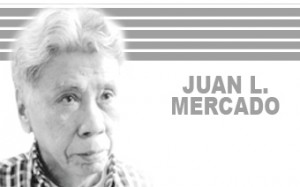 “All Saints’ Day†is marked every November 1. The feast is all about saints. Those who bear capital “Sâ€Â named for one.
“All Saints’ Day†is marked every November 1. The feast is all about saints. Those who bear capital “Sâ€Â named for one.
And thery: range from Saints Peter and Paul, Ignatius of Loyola to Pedro Calungsod and Lorenzo Ruiz.
Included in the feast  are as those equally blessed but whose names are, often unknown They are therefore tagged with lower  case “Sâ€.
The following day’s festival is more familiar to us   and known as as “All Souls Day. â€
Latinos call this: Dia de los Dinfuntos. “In Hungary, ithey say: “halotak napja†and in Syria†“Yom el Maouta.â€.
Here, cemteries are crammed with crowds who tend spurced up graves, lighted with garish llights for a couple of days. Many pray even as  karaoke speakers blast away.
Bored editors plow through “de-cajon storiesâ€:: traffic jams, jostling crowds, on the lookout for anything – anything – that will depart from last year’s formula.
The sentiment is universal. “Lift us up, that we may see further, as one by one, You gather scattered families, from the distractions, strife and weariness of time, to the peace of eternity,.†The anicient prayer goes,
This October,, Pope Francis canonized together  the first married couple in modernn times. Louis and Zelie Martin were the parents of St Therese of Lisieux
In her autobiograhpy “The Story of A Soul, St Therese, often called “The Little Flowerâ€, says her formative years were most shaped by her parents. After her dyiing mother received extreme unction, her father “took me in his arms and had her kiss the forehead of Zelie>
They underscrore  the central – and stunning — reality remains of life beyond a handful of ashes.,
Halloween is a contraction of “All Hallows Eve† 1848, Irish immigrants brought those spooky costumes to the US where it continues today as a fun-filled kids’ feast.
But reaching out to the departed goes back thousands of years. “It is a good and wholesome thought to pray for the dead,†declares the ancient Book of Macabees.
By the year 998, the Benedictine abbot Oddilo of Cluny picked November 2 for remembrance. This practice spread to other countries, including the Philippines .
The living aid the departed, the teaching went, by asceticism’s trio: prayer, sacrifice and alms. They’d help atone for past transgressions, and pave entry into the Beatific Vision.
We Filipinos use the idiom itaga mo sa bato to assert utmost confidence,†Pastor Lino Pantoja writes. “ ‘Oh, that my words were engraved in rock forever, “ the biblical figure Job wrote.’â€
They’re words of Job’s primitive theology of the Resurrection: “I know that my Redeemer lives. And in the end, He will stand forth upon the earth. And after my skin shall have been destroyed, yet in my flesh I shall see God.â€
These words were written 2,500 years before Easter’s empty tomb. And in 1741, George Fredric Handel had worked it into his soaring oratorio that the world never forgot: “The Messiah.â€
Our grandchildren belong to the post-Vatican II generation. They never heard what echoed in requiem services of our long-vanished youth: the Dies Irae (“Day of Wrathâ€) in plain chant.
Tuba mirum spargen sonum/Per sepulchra regionum/Coget omnes ante thronum, the choir would sing. My now-hazy freshman Latin translates that into:  “Trumpets blare through sepulchers, calling all to appear before judgment’s throne.â€
Young and old, however share the universal aching for assurance of what lies beyond the grave.
“If only I could see him, for just a second, and know he’s all right, I’d be able to cope,†Seamus tells the priest blessing his son’s crumpled body, killed in an accident.
“I remembered Seamus’ comment†at a Mass for a student accident victim, writes Jesuit theologian Catalino Arevalo. †The boy’s classmates chose the Transfiguration for gospel reading. “The one about Jesus going up to the mountain and changing into dazzling white,†they suggested.
“It struck me, for the first time, that Jesus allowed his friends to see, ‘for just a second’, what was beyond. Their reaction was strange:  they did not want to leave the spot. It’s ‘wonderful for us to be here.’ But Jesus reminded them they had to go down the mountain.
“What if we could get some vision, ‘for only just a second’? Or if we could, ‘for only just a second’, see people who’ve gone before us, in faith, especially those suddenly or tragically taken, in that place of light that is God’s promise?
“What if we, too, had some authentic extended experience of what ‘our eyes have not seen, nor our ears heard’ of what God prepared for those who are faithful?
“It is truly the better thing that an authentic extended experience is not given us — because we would not want to leave the spot. Better still because there is still so much of the humdrum, the frustrating, the difficult for us to endure, and if possible, with courage, to build some small beginnings of the Kingdom which Jesus wanted to make our work in this world.â€
Whether in the dim catacombs, off Rome’s Appian way, or in our garishly lighted cemeteries, All Souls’ Day speaks to us in Nobel Laureate Rabindranath Tagore’s poignant verse: “Death is not the extinguishing of life. It is putting out the lamp, because dawn has come.†#### (By  Juan  L Mercado)
